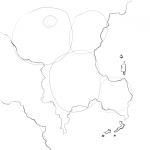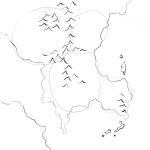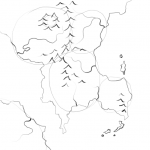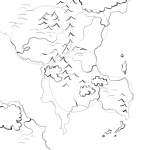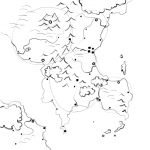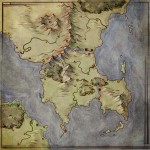A guest post by Stone Sanchez.
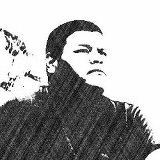 In my journey to be a writer, Anime has had one of the biggest effects on me. From the wayward storytelling of FLCL, to the completely epic outpouring that was Cowboy Bebop, the influence and inspiration it’s served for me has been phenomenal. In my last post, I covered how I was introduced to anime though Pokémon, and a lot of the different types of anime that exist. I’m not making a joke when I say that I’ve sampled and watched, in depth, almost every single type of anime that exists. Its presence has had a massive influence over my writing, how I perceive story, and the way my characters are presented.
In my journey to be a writer, Anime has had one of the biggest effects on me. From the wayward storytelling of FLCL, to the completely epic outpouring that was Cowboy Bebop, the influence and inspiration it’s served for me has been phenomenal. In my last post, I covered how I was introduced to anime though Pokémon, and a lot of the different types of anime that exist. I’m not making a joke when I say that I’ve sampled and watched, in depth, almost every single type of anime that exists. Its presence has had a massive influence over my writing, how I perceive story, and the way my characters are presented.
When I started off watching anime, I was around six or seven years old. In those early developmental years, my common brand of story became a foreign form of storytelling. Goku (Dragon Ball Z), Heero Yuy (Gundam Wing), and Kenshin Himura (Rurouni Kenshin) were names that were just as big as Superman, Wolverine, and Batman. As I grew older, I delved more into this obsession that was slowly taking America by storm, and became one of those kids who flocked to the internet in search of anime. The why of it has to come into play at some point or another, and for me it was the storytelling. (Not so much in Dragon Ball Z, I have to be honest. Watching two guys beat one another senseless was all the story telling I needed in that one.)
In Gundam Wing, I discovered a sense of idealism that’s managed to still have an effect on me today.
“History is much like an endless waltz.
The three beats of war, peace,
and revolution continue on forever.”
-Mariemaia Khushrenada
Although I cite the quote above coming from the character who said it, the writers of Gundam Wing are the ones who put that view of the world in there. The idea of total pacifism, and the idealism behind giving your life for what you honestly believed in-no matter how old or young, really hit me. In the show, the characters portrayed were all teenagers, but they were fighting ardently for what they believed in. Honestly, my heroes were those five Gundam pilots.
Throughout anime I found characters like those young boys, like Kenshin. Hitokiri Batosai, The Manslayer. A wandering vagabond of a swordsman who, in his journey of repentance for the blood he’d spilt during the Meiji Revolution of Japan, took an oath never to kill again. In his story, this man was known as “The Strongest of the Imperialist” and had such a reputation that, if those who were hunting for him ever discovered where he was, they would take any opportunity they could to kill him. However, after he disappeared from the bloodbath that was the end of the Meiji Revolution, his past came back to haunt him. The current life he’s attempted to make for himself is invaded and he finds himself having to hold off the inner demon that exists inside him, while also defending those he’s come to love as his family; all of this with a reverse blade sword-a sword that is a symbol of his vow never to take another human life again.
In my own writing, characters like these have had a massive impact. Sure, Superman was always overly impressive, but there was a brand of awesome that came with characters that weren’t complete boy scouts. These characters knew the weight that came with having to kill, and often dealt with it in very unique ways-since there were times when killing their enemy was the only true path.
There were a couple of times where I’ve used the word “beautiful” to describe anime. The storytelling in it has left me speechless more than once, and in the case of Clannad, I was in tears. If anyone reading this has never watched a show called Code Geass all the way through, I suggest you do it as soon as possible. The idea of “destroying the world to remake the world” never meant as much as it did until I saw that show. The distorted perceptions of justice, peace, and the idea of flawed pacifism were burned into my mind by anime. I guess you could say that it introduced me to the idea of gray. Things weren’t always so black and white for the protagonist in anime, and sometimes those protagonist weren’t even heroes.
The main influence anime has had on me is that it changed my perception on how I viewed life in general. It sounds funny, but it’s true. I learned more than just story formats. In the same way that an author’s prose affected the way I write, anime’s storylines and passions had a heavy influence on me. Which is probably why some of the first stories I ever wrote was fan fiction of my favorite anime.
So, the Anime Effect has been that it was the format that made me love story enough to want to write stories. It made me want to be creative, and it led me down the path that would eventually have me writing stories of my own. In my own novels and stories, I can see hints of the heroes I had growing up, and traces of the scenes that I watched implanting themselves in my writing. Sure, it wasn’t the only thing that inspired me, but I have to admit it probably played one of the pivotal rolls. It got me writing.
Thanks, anime.
* * *
Stone Sanchez is an aspiring professional author who has been active in the writing community for the past two years. Currently Stone is associated with the Superstars Writing Seminars, where he records and manages the production of the seminars. He’s also worked with David Farland by recording his workshops, and is currently the Director of Media Relations for JordanCon, the official Wheel of Time fan convention. Often referred to as the “kid” in a lot of circles, Stone is immensely happy that he can no longer be denied access places due to not being old enough.





